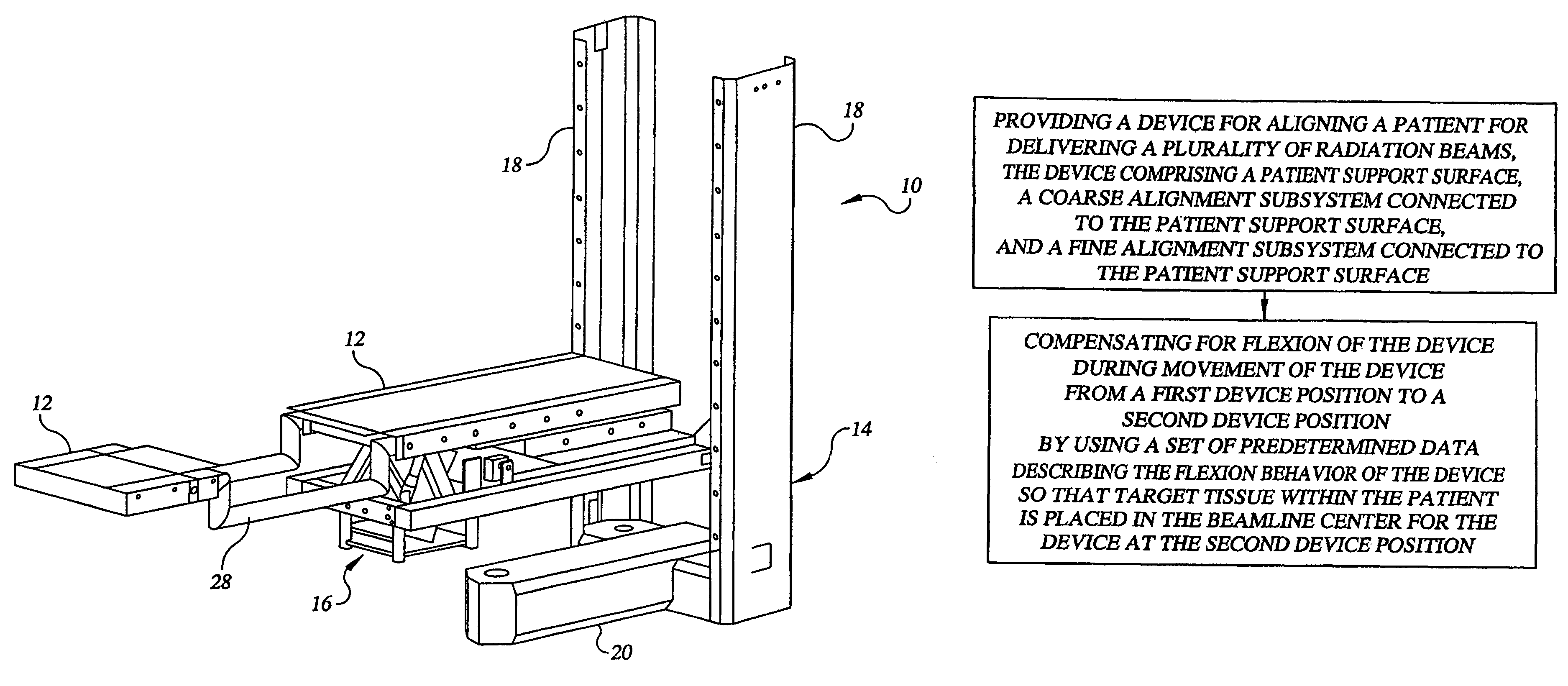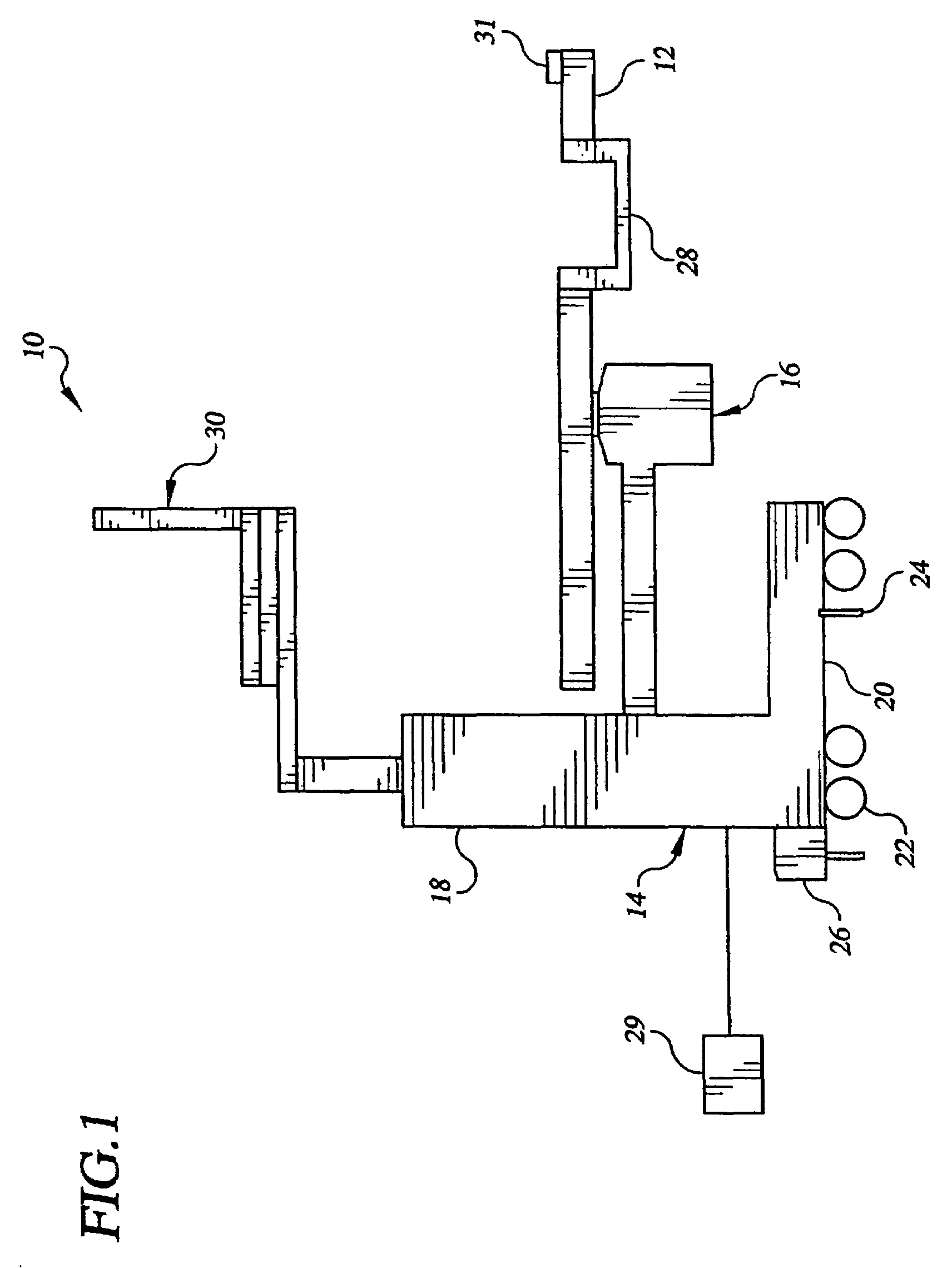Method and device for delivering radiotherapy
a radiotherapy and radiotherapy technology, applied in the direction of patient positioning for diagnostics, therapy, application, etc., can solve the problems of increasing the cost per treatment, affecting the treatment effect, and the radiation beam being misaligned with the target tissu
- Summary
- Abstract
- Description
- Claims
- Application Information
AI Technical Summary
Benefits of technology
Problems solved by technology
Method used
Image
Examples
Embodiment Construction
[0038]According to one embodiment of the present invention, there is provided a device for aligning a patient for delivering a plurality of radiation beams, such as proton beams, from a radiation beam delivery device at a plurality of device positions that allows a patient to be aligned in less time than using conventional aligning devices. According to another embodiment of the present invention, there is provided a method of aligning a patient for delivering a plurality of radiation beams, such as proton beams, from a radiation beam delivery device at a plurality of device positions. The method allows a patient to be aligned in less time than using conventional methods. By reducing the amount of time for alignment, both the device and the method allow an increased number of patients to be treated, decrease the cost of treatment per patient, and reduce the amount of radiation exposure to non-target tissues resulting from the alignment process. According to another embodiment of the...
PUM
 Login to View More
Login to View More Abstract
Description
Claims
Application Information
 Login to View More
Login to View More - R&D
- Intellectual Property
- Life Sciences
- Materials
- Tech Scout
- Unparalleled Data Quality
- Higher Quality Content
- 60% Fewer Hallucinations
Browse by: Latest US Patents, China's latest patents, Technical Efficacy Thesaurus, Application Domain, Technology Topic, Popular Technical Reports.
© 2025 PatSnap. All rights reserved.Legal|Privacy policy|Modern Slavery Act Transparency Statement|Sitemap|About US| Contact US: help@patsnap.com



